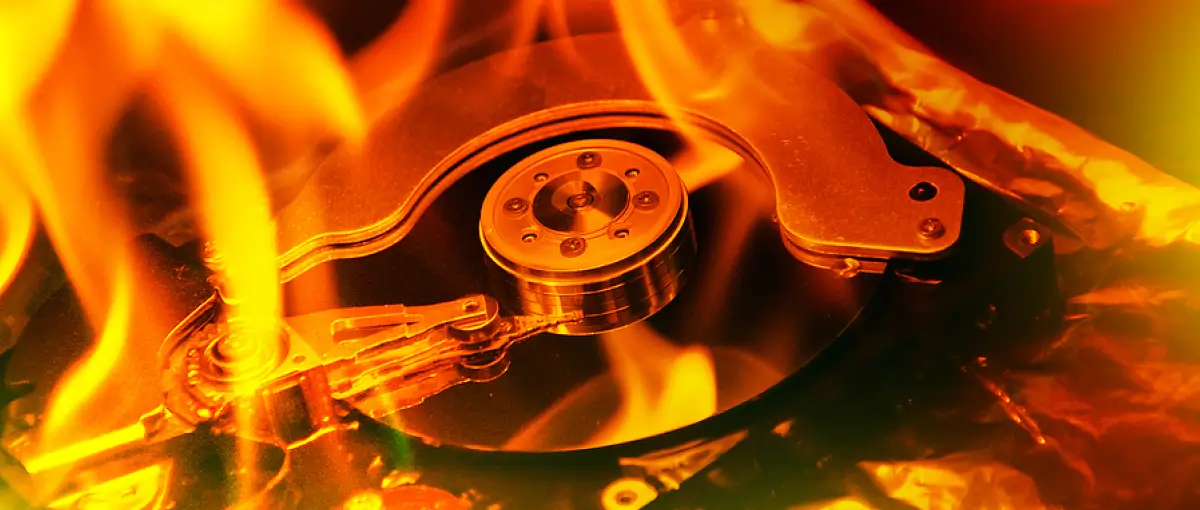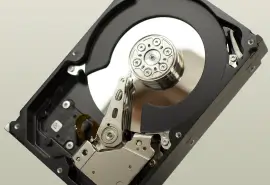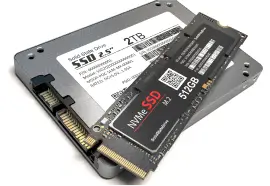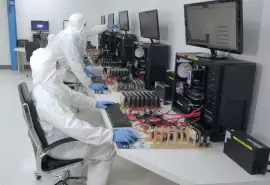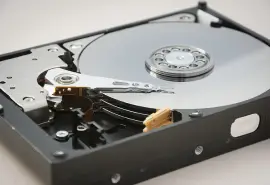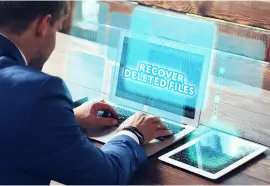Data recovery for fire damage is complex, but it is possible. However, given the extent of the damage in many of these cases, the task is best suited to a professional. Retrieving data from a fire-damaged storage device often demands advanced hardware and software. Each attempt affects the success rate. Handling the device with care and trusting the experts is essential.
Whether your storage device suffered fire damage in a natural disaster or encountered another source of extreme heat, Secure Data Recovery can help.
Key Takeaways:
- Data recovery services are the best method to restore files from a burnt storage device.
- You can take certain steps following fire damage to increase the odds of a successful recovery.
- Call 800-388-1266 or request help to receive a free consultation from an expert and retrieve important data.
Can Data Be Recovered After Fire Damage?
Yes. Although difficult, data recovery for fire-damaged devices is still an option.
Often, users faced with fire damage do not have time to create backups. For that reason, they may need a service to retrieve recent files from their storage device. In most cases, skilled engineers can use specialized tools and techniques for hard drive repair and other procedures. This work allows technicians to restore data regardless of the media.
Common Challenges of Fire Damage
The process of salvaging data after a fire is complex. Engineers often have to treat warped platters in RAID and hard drive recovery cases. SSD and phone data recovery may involve melted components and electronics.
Other obstacles include different types of damage. For instance, a fire-damaged device might also have soot and water from extinguishers. This damage can introduce additional challenges that complicate the process. Soot can scratch the surface of platters or settle on printed circuit boards (PCBs). The water-based agents used in extinguishers help suppress the fire. Yet they can cause electrical issues and corrode or warp components. An engineer must address each example of damage to recover files.
In addition, hard disk drives (HDDs) store adaptive data on ROM chips. This data calibrates read/write head positioning and actuator movement and maps bad sectors on the disk. Each set of adaptive data is specific to its drive. As a result, data recovery depends on preserving that data.
A hard drive also relies on the magnetic coating of platters to store files. Extreme heat can degrade the material, causing the disk to lose its magnetic properties. That point is known as the Curie temperature. If platters reach that point, then restoring data is impossible.
Since every case is unique, you must consult a specialist to learn the details. Your case might feature localized damage. Another case may have melted magnetic film or memory cells.
Sadly, there are some limits when dealing with fire-related data loss. Therefore, businesses and people with important files should prepare for it. Taking steps to prevent data loss from fire damage is easier than restoring files on a destroyed device. Consider saving regular backups to a cloud storage service. Other options to duplicate data include storing an external hard drive inside a fireproof safe or offsite.
How To Handle a Storage Device with Fire Damage
Here are a few tips for handling a burnt storage device to avoid further damage:
- Allow the device to cool down.
- Wear gloves when handling the storage.
- Gently remove any debris or residue on the device’s case.
- Check for signs of visible damage, like melted connectors.
- Store the device in an anti-static bag filled with packing foam. (Note: Do not use packing peanuts. They are prone to static.)
Do not open the device to inspect the condition of its internal components.
Opening the device could lead soot to spread deeper inside of it. The harmful substance threatens the storage medium, PCB, and other parts. You also risk shattered platters from thermal damage, short circuits, and static discharge. Any of these issues could make a tough situation even worse.
Certified Data Recovery for Fire Damage
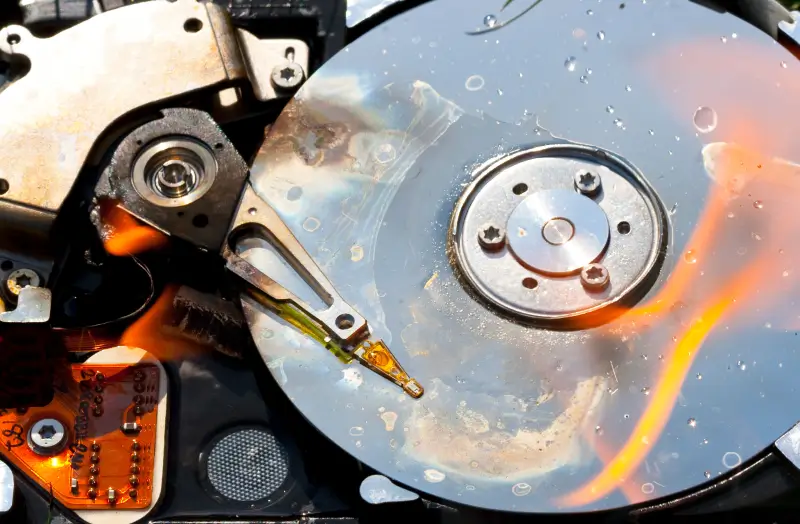
Your first attempt is the best chance to recover data. Each failed effort makes future attempts even harder.
A professional data recovery service is the most effective method to retrieve files from a storage device with fire damage. Home users lack the specialized expertise, latest tools, and state-of-the-art cleanrooms to repair a burnt device and reverse data loss. An experienced technician can develop a clear plan and knows how to minimize mistakes. That knowledge impacts success rates across all failure types. Especially in fire damage cases.
Permanent data loss is likely without modern facilities and refined skills.
Choose a service with a track record of results for data loss due to fire damage.
Contact Us To Retrieve Data From Fire-Damaged Device
At Secure Data Recovery, we provide our experts with equipment to restore files after catastrophic events and contact with extreme heat. That means we maintain a collection of custom tools, cutting-edge soldering stations, forensic-grade software, and certified cleanrooms. These resources improve outcomes for any damaged device.
Since 2007, our team has maintained a 96% success rate across all cases, including those with fire damage. We continue to innovate and offer fire-damaged hard drive recovery and similar services because we can help. Our standard service comes with a free diagnostic and quote, as well as a No Data, No Recovery Fee guarantee. You get your data back, or pay nothing.
800-388-1266, request help, or find a location to speak with us and start your case today.

